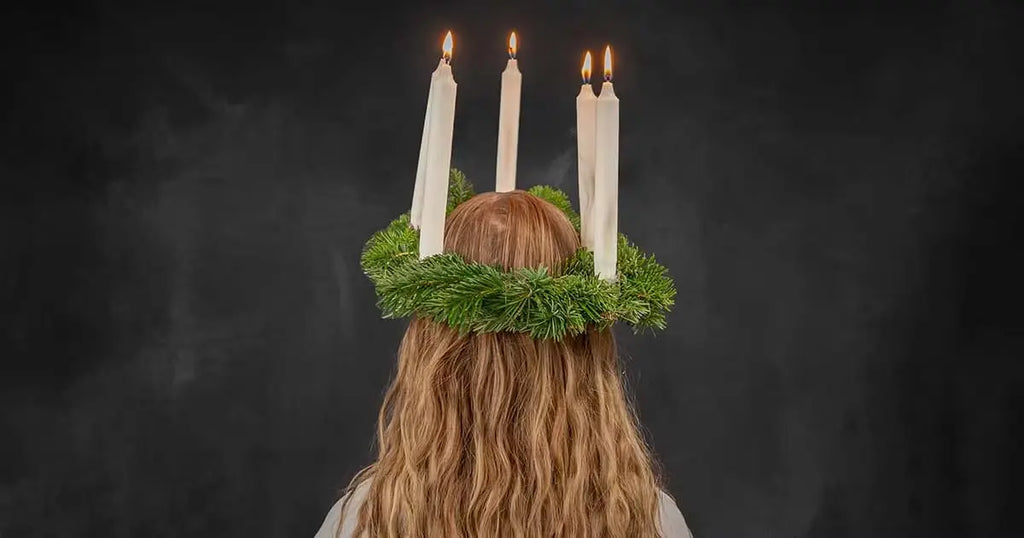December 5th
The real history of Santa Claus
When you think of Christmas, what’s the first thing that pops into your head? Chances are, it’s a jolly man dressed in red, otherwise known as Santa Claus! And Kris Kringle. And Sinterklaas. And Saint Nicholas… If you’re confused, you’re not the only one. But what’s up and down? Where did Santa Claus come from, and how did he become the beloved figure we know today?
It all starts with Saint Nicholas, and his story can be traced back hundreds of years. According to most stories, Saint Nicholas was a monk born around 280 A.D. near Myra in what is now Turkey. He became well-known for his charity towards children and the poor, and by the Renaissance he was one of the most popular Saints in Europe. Particularly in the Netherlands, where he continued to hold a special place, even after the reformation.
When Dutch settlers came to America, they brought Sinterklaas (the Dutch nickname for Sint Nikolaas) with them, and the name Santa Claus developed from there. By the 1800s, the figure of Santa Claus was gaining popularity, but he still had many different personas and looks; from a tiny, happy elf to a scary tall figure. The long poem “Twas The Night Before Christmas” is responsible for many of the characteristics we know today; in this poem, he is a jolly, gift-giving elf that goes down chimneys to deliver presents, and he flies from house to house in a sleigh pulled by magic reindeers. Sound familiar?

In 1881 the first drawings of a round, jolly Santa Claus in a red suit appeared in Harper’s Weekly. But this is all very American; so how did this vision of Santa Claus spread to the rest of the world?
That is, in large part, due to none other than the Coca-Cola Company. In 1931, Coca-Cola started a large marketing campaign with ads depicting the Santa Claus most of us know today: A plump, happy older man with a large, white beard and, of course, a suit in the company’s signature red. Coca-Cola has held on to this depiction ever since, and this spread to the rest of the world with the general export of American popular culture after the Second World War. In many places, this image mingled with their own traditional Santa Claus figure. In Denmark, for example, Santa Claus wears red and delivers presents from a reindeer-drawn flying sleigh BUT, he does not live on the North Pole; he lives in Greenland.
What ultimately keeps the legacy and wonder of Santa Claus alive is simple: it’s you and your children. All poems and marketing ploys aside, we wouldn’t have Santa Claus if it wasn’t for generations of parents teaching their kids to believe in this jolly, magical figure.
December 13th:
Saint Lucy’s Day
Saint Lucy’s Day is always December 13th, which was the date of the Winter Solstice according to the Julian Calendar; her day is considered a festival of light in the dark months, something that really spoke to the dark Scandinavian countries, where some very special traditions are still practiced today.
The real Saint Lucy, or Saint Lucia, was a woman born in Syracuse, Sicily around 300 A.D. According to most accounts of her life, she was a devout Christian and suffered a martyr’s death when she refused to give up her faith and virginity for marriage. She is the official patron Saint of Syracuse and her day is celebrated in many different ways throughout Italy and other Catholic countries.

In Scandinavia, the idea of light in the dark months seems to have laid the foundation for the traditions we see today. Saint Lucy’s Day celebrations are particularly strong in Sweden, where every town and city selects a Lucia-bride. Saint Lucy’s Day parades are also very common both in Sweden and Denmark; The Lucia-bride leads the parade wearing a white robe and a crown made of evergreens with lit candles on her head. The rest of the white-clad participants walk slowly with their own candles in hand behind the bride, and the procession sings psalms praising Saint Lucy.
The custom of Saint Lucy’s Day parades are an integral part of Christmas celebrations, especially in kindergartens and schools, where the children wander the darkened halls with their lights, singing both for Saint Lucy and for light in the darkness. You might think “small children with burning candles in their hands and hair?!”, but don’t worry – these days, they use electric lights for safety reasons, of course.
December 17th:
The origins of the Christmas tree
The tradition of bringing evergreens into our living spaces actually go back way further than you might think. Long before Christianity, evergreen plants held a special symbolism for people of the ancient world, especially in wintertime. The evergreens symbolized different things in different cultures – some cultures believed that the evergreens warded off bad spirits and witchcraft, while in many Northern European countries, where the winters were dark and long, the evergreens symbolized the life that would soon grow again in spring.

The Germans are generally given credit for the tradition of the Christmas tree as we know it today; the practice of bringing an evergreen tree into the house and decorating it with ornaments and lights can be traced back to the 1500s. German immigrants took the tradition with them to America and Canada, and the decorated Christmas tree became popular in the UK (and with the high society in America) in the mid 1800s thanks to… drumroll… Queen Victoria and her husband Prince Albert!
After they were illustrated in the London News, standing with their children around a decorated Christmas tree, the tradition really took off. Victoria & Albert were extremely popular, and their life was often copied with a frenzy– their idyllic family scene in front of the Christmas tree was no exception. To illustrate the power of their popularity, Victoria is also generally thought to be responsible for the trend of wearing a white wedding dress.
After the invention and commercialization of electricity, keeping the Christmas tree lit for longer periods of time became easier, and we started to see the introduction of the large, lit trees on public squares. For example, the famous Rockefeller Center Christmas tree in New York was lit for the first time in 1933 (the first small tree was placed there in 1931), and today the large tree is decorated with more than 25,000 lights.
December 23rd:
Christmas traditions in different countries
Did you know that in parts of Scandinavia, food is set out for the resident elf? Scandinavian elves are different from the American elf often portrayed in movies; they rather resemble a garden gnome in appearance. The elf is a remnant from old Scandinavian folklore, where the elf was considered a protecting house spirit/guardian. But they could also be mischievous or downright cruel if they were mistreated. So, to keep the elf happy, residents of houses and farms would put porridge or other food out for him. A tradition that has carried over to modern times.

In Austria and neighboring alpine regions, you’ll find a rather frightening figure called the Krampus. He is a horned, furry demon-like creature with big claws that serves as a companion to Saint Nicholas. While Saint Nicholas rewards the nice children, Krampus punishes the naughty children (a carrot and stick kind of situation). There are similar figures like Knecht Ruprecht in Germany, and Sinterklaas' sidekick Piet in the Netherlands, though none seem to be as frightening as the Krampus.
In many countries, Christmas time is filled with light and food. For example, in the Philippines, the city of San Fernando holds a light festival called Ligligan Parul where eleven villages compete to make the most elaborate, kaleidoscopic giant lanterns (they measure up to 6 meters in diameter!). In Colombia, Little Candles’ Day marks the beginning of the Christmas season, and people place paper lanterns and candles in their windows and gardens in honor of the Virgin Mary. In Washington DC, a huge Menorah is raised on the White House Lawn every year to mark the eight days of Hanukkah, and one candle is lit every night of Hanukkah.
In Venezuela you will find tamales on the Christmas table, in Japan a new tradition of eating Kentucky Fried Chicken for Christmas Eve dinner is gaining steam and in Australia and New Zealand families will often gather for a traditional Christmas Barbecue, since Christmas is in the middle of summer down under.
Just can't get enough of the Holidays? Visit our other Christmas blogs with recipes for Holiday sweets and fun Christmas DIY's for you and your kids.

